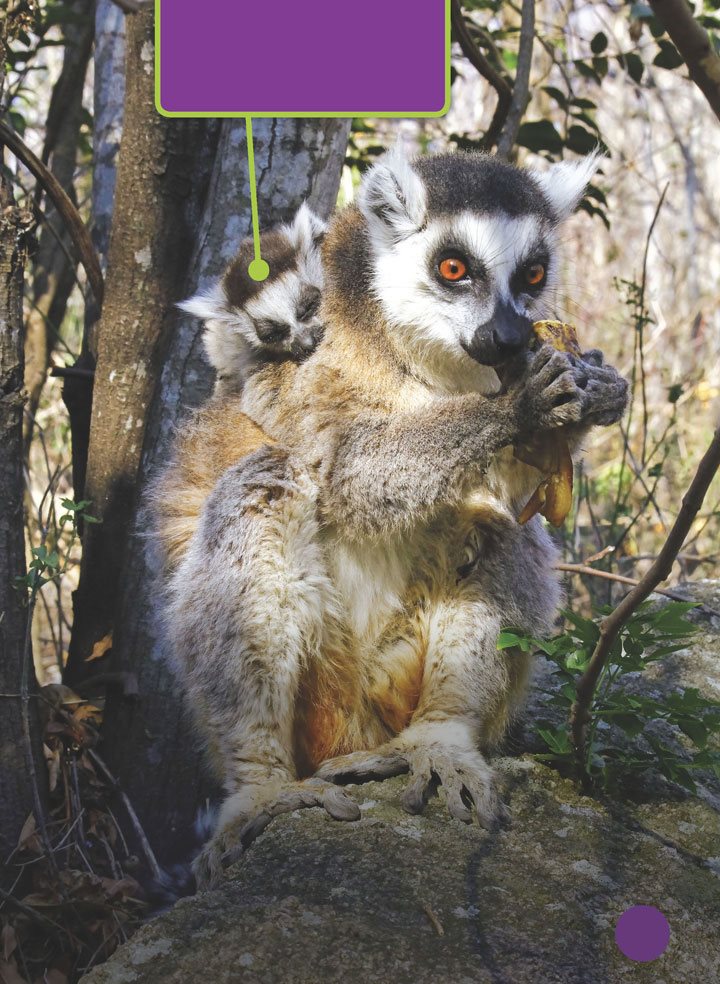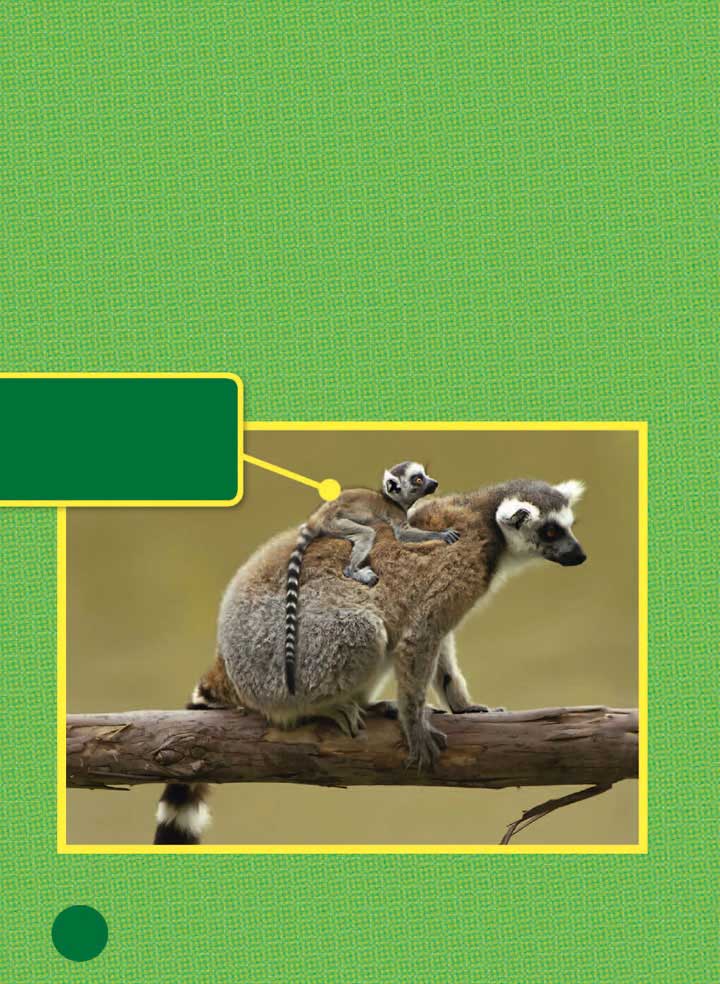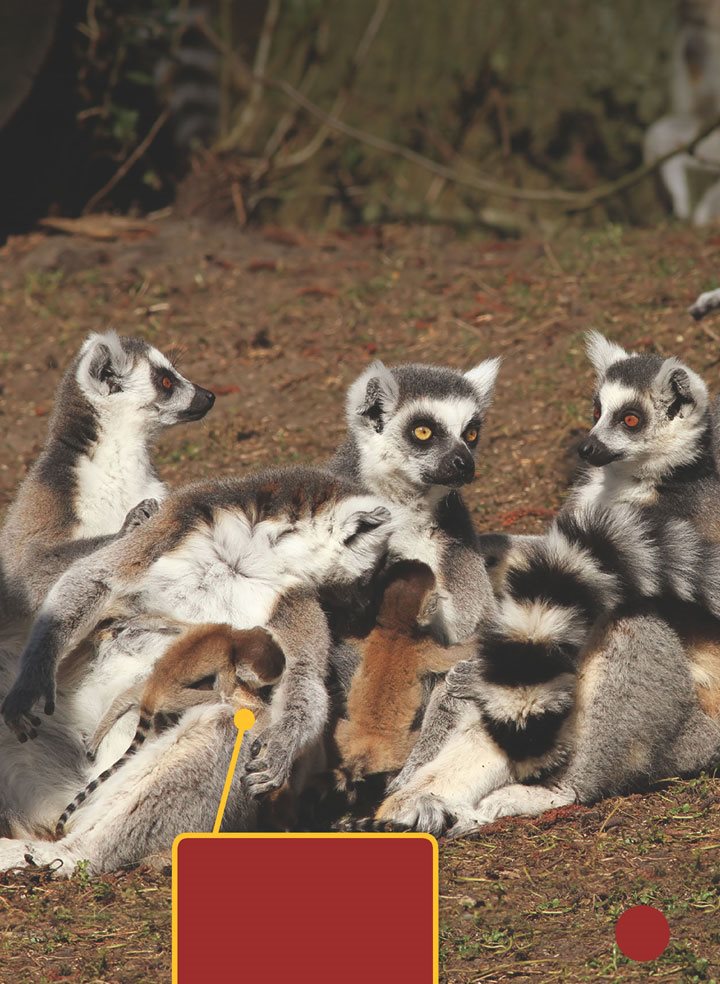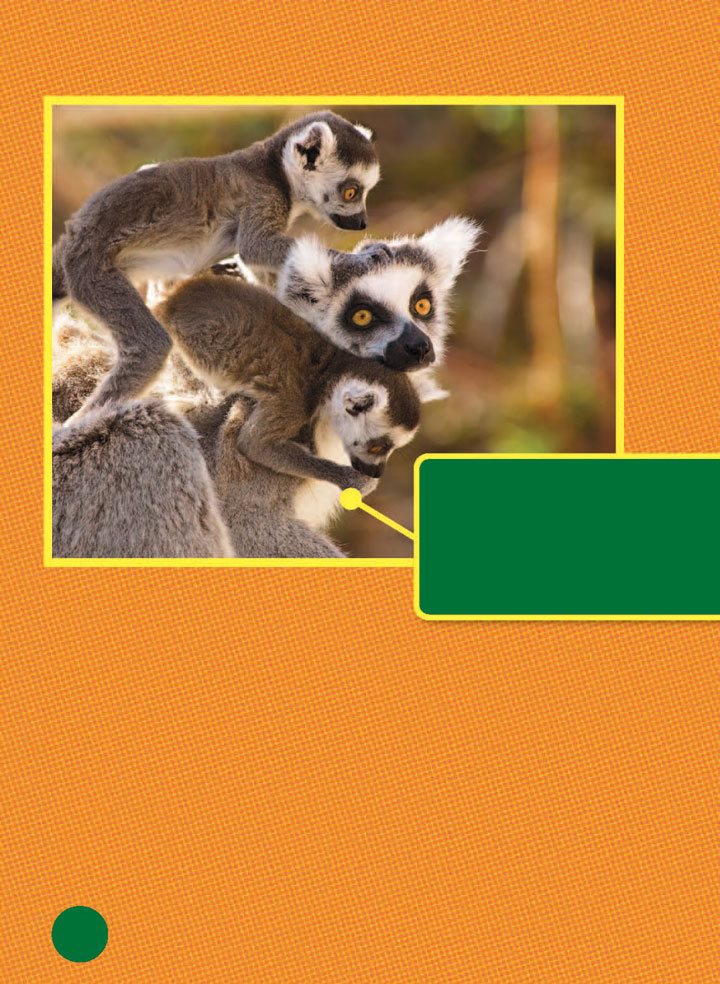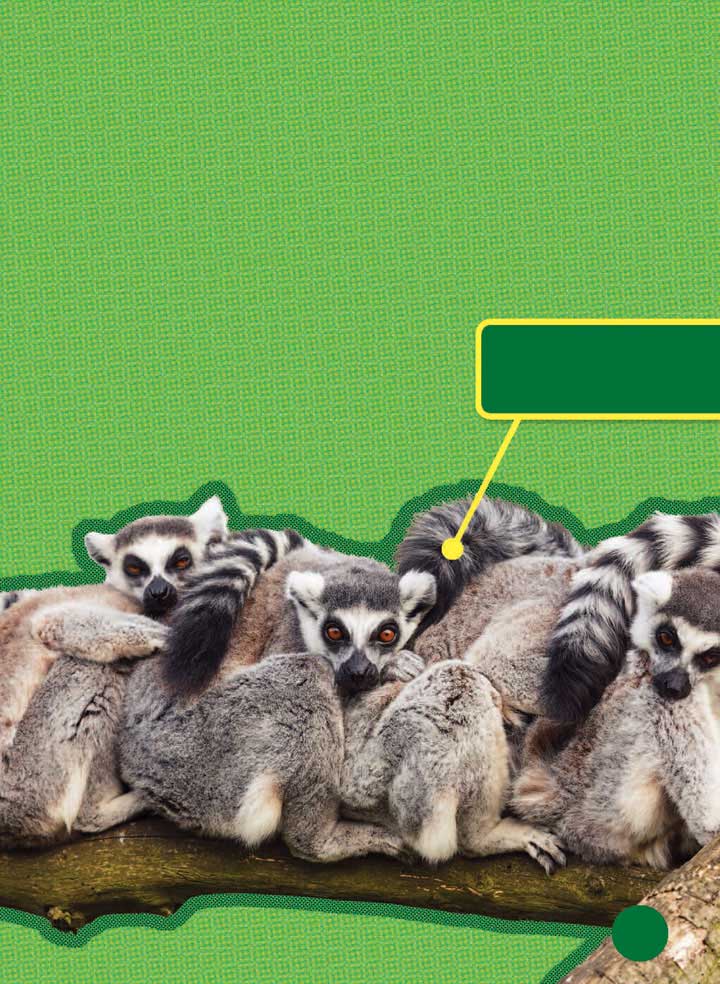Meet a
Baby
Lemur
Samantha S. Bell
Copyright 2016 by Lerner Publishing Group, Inc.
Content Consultants: Dr. Mark C. Andersen, Department of Fish Wildlife and Conservation Ecology,
New Mexico State University, and Chris Smith, Duke Lemur Center
All rights reserved. International copyright secured. No part of this book may be reproduced,
stored in a retrieval system, or transmitted in any form or by any meanselectronic, mechanical,
photocopying, recording, or otherwisewithout the prior written permission of Lerner Publishing
Group, Inc., except for the inclusion of brief quotations in an acknowledged review.
Lerner Publications Company
A division of Lerner Publishing Group, Inc.
241 First Avenue North
Minneapolis, MN 55401 USA
For reading levels and more information, look up this title at www.lernerbooks.com.
Library of Congress Cataloging-in-Publication Data
Bell, Samantha, author.
Meet a baby lemur / Samantha Bell.
pages cm. (Lightning Bolt Books. Baby African animals)
Audience: Ages 5-8.
Audience: Grades K to 3.
Includes bibliographical references and index.
ISBN 978-1-4677-7972-2 (lb : alk. paper) ISBN 978-1-4677-8365-1 (pb : alk. paper)
ISBN 978-1-4677-8366-8 (eb pdf)
1. LemursInfancyJuvenile literature.
I. Title.
QL737.P95B45 2015
599.8'3dc23
2014044316
Manufactured in the United States of America
1 BP 7/15/15
Table of Contents
A
Big Family
A group of ring- tailed lemurs
walks through the forest. It is
almost time for the females to
give birth!
Lemurs live in groups.
Females in the group give
birth around the same time.
Many lemur babies are
born each year.
The females have been pregnant
for more than four months. All
the babies in the group will be
born in late summer.
Mother lemurs usually have
one baby. Baby lemurs weigh
around 2.5 ounces (70 grams).
That is about as much as
fourteen nickels.
Baby lemurs
are very small
and thin.
Each baby lemur
measures about
inches (10 cm) long,
a little smaller than
your hand. Their
parents are about
inches (43 cm) long.
That is the size of a
house cat. Their tails
are a bit longer than
their bodies.
A ring- tailed
lemur's tail is
between
and inches
(56 and
centimeters)
long.
Baby lemurs look a lot like
their parents. They have rings
on their tails and black masks
covering their faces.
Baby lemurs may be
smaller than their
parents, but they
look very similar.
Groups of lemurs are
called troops. The females
in a troop are related. They
are mothers, daughters, aunts,
and sisters. One female leads
the troop.
Between six and
thirty lemurs
belong to a troop.
Riding
with
Mom
Newborn lemurs cling to their
mothers bellies. They crawl
onto their mothers backs after
they are a few weeks old. At
three weeks old, lemurs also
start walking and climbing.
Very young lemurs
ride on their
mothers bellies.
Amotherlemurgroomsand
feedsherbaby.Butshedoes
notworkalone.
Female lemurs help
take care of one
anothers babies.
Many baby lemurs come back
to their mothers only to eat
or sleep. Others are more shy.
They hang onto their mothers
as much as they can.
Some baby lemurs
like to explore.
When the
lemurs are
five to six
months old,
they do not
need their mothers
anymore. They
weigh almost pounds
(2 kilograms), or as
much as a bag
of sugar.
Lemurs are fully
grown at one and
a half years old.
A
Good
Meal
Until they
are about six
months old,
young lemurs
drink their
mothers milk.
Then lemurs
switch to a diet
of solid foods.
Lemurs begin eating some
solid foods at six weeks old.
But they still need to nurse
for about four more months.
Lemurs travel
together from tree to
tree looking for food.
The troop eats
twice a day.
They eat their
first meal in
the morning.
Babies learn from
their mothers
what foods are
safe to eat.
Baby lemurs learn to eat by
watching their mothers and
the other lemurs. When a
mother lemur eats some food,
her baby will take a bite too.
After eating, the troop naps
together in the trees. They
wake up hungry. It is time
to eat again!
Lemurs nap in
a cozy pile.


















